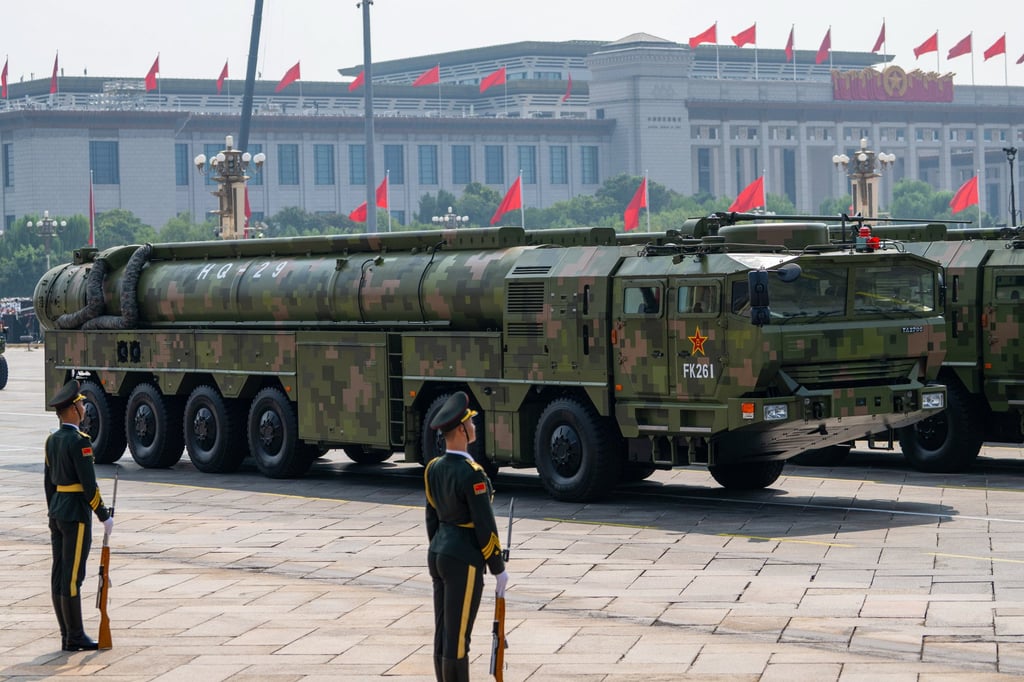The HQ-29, also known as the Red Flag-29, is considered a key supplement to the top layer of China’s multilayered ballistic missile defence system.
The missile is mounted on a six-axle launcher, according to the Chinese military magazine Ordnance Science and Technology, although Beijing has not revealed the specifications of the HQ-29 anti-ballistic missile system.

In September, the magazine, which is supervised by the Shaanxi Association for Science and Technology and mainly reports on popular science and China’s latest military developments, said the system was believed to be equipped with two launch tubes around 1.3 metres (4.3 feet) in diameter, and was capable of carrying two 10.5 metre-long, 1.2-metre-diameter interceptor missiles.
According to state broadcaster CCTV, the HQ-29 is designed for mid-course interception of medium and long-range intercontinental ballistic missiles from outside the atmosphere, at altitudes above 100km (62 miles).
On the day of the parade, CCTV highlighted the mobile deployment and kinetic energy interception capabilities of the system, saying it represented China’s world-leading mid-course anti-missile technology.
In the lead-up to the parade, the French military news website War Wings Daily said it believed the HQ-29 could strike intercontinental ballistic missiles (ICBMs) at an altitude of at least 500km, while Ordnance Science and Technology said the anti-missile system was expected to target long-range or ICBMs above the Karman line space boundary at altitudes up to 2,000km.


